What Hi-Fi? Verdict
The KEF LS60 Wireless is everything a modern all-in-one hi-fi system should be, combining eye-catching looks, a suite of useful features and outstanding sound quality
Pros
- +
Focused, hugely entertaining sound
- +
Superb driver integration
- +
Streaming and amplification built-in
Cons
- -
Wired connection needed for native 24-bit/192kHz playback
- -
Expensive
Why you can trust What Hi-Fi?
For its 60th anniversary celebrations, KEF could have kept things relatively simple. It could have done the hi-fi equivalent of getting a few friends over for drinks, nibbles and maybe a couple of glasses of fizz. It could have built a new passive speaker to mark the occasion and nobody would have objected.
What KEF has actually done is go into full-on party mode, hiring a venue, getting the private caterers in and paying for a live band to keep us dancing into the early hours. In hi-fi terms it has decided to launch one of its most challenging products to date: the LS60 Wireless, a floorstanding sibling to its fantastic LS50 Wireless II all-in-one hi-fi system, and featuring two Award-winning innovative technologies.
But the KEF LS60 Wireless isn’t just towers based on the bookshelf version. That description just doesn’t do it justice. As you can see from the pictures and as you’re about to learn, the company has thrown so much at the LS60 that it's on a whole different level, both in terms of engineering and sound quality.
Design and build
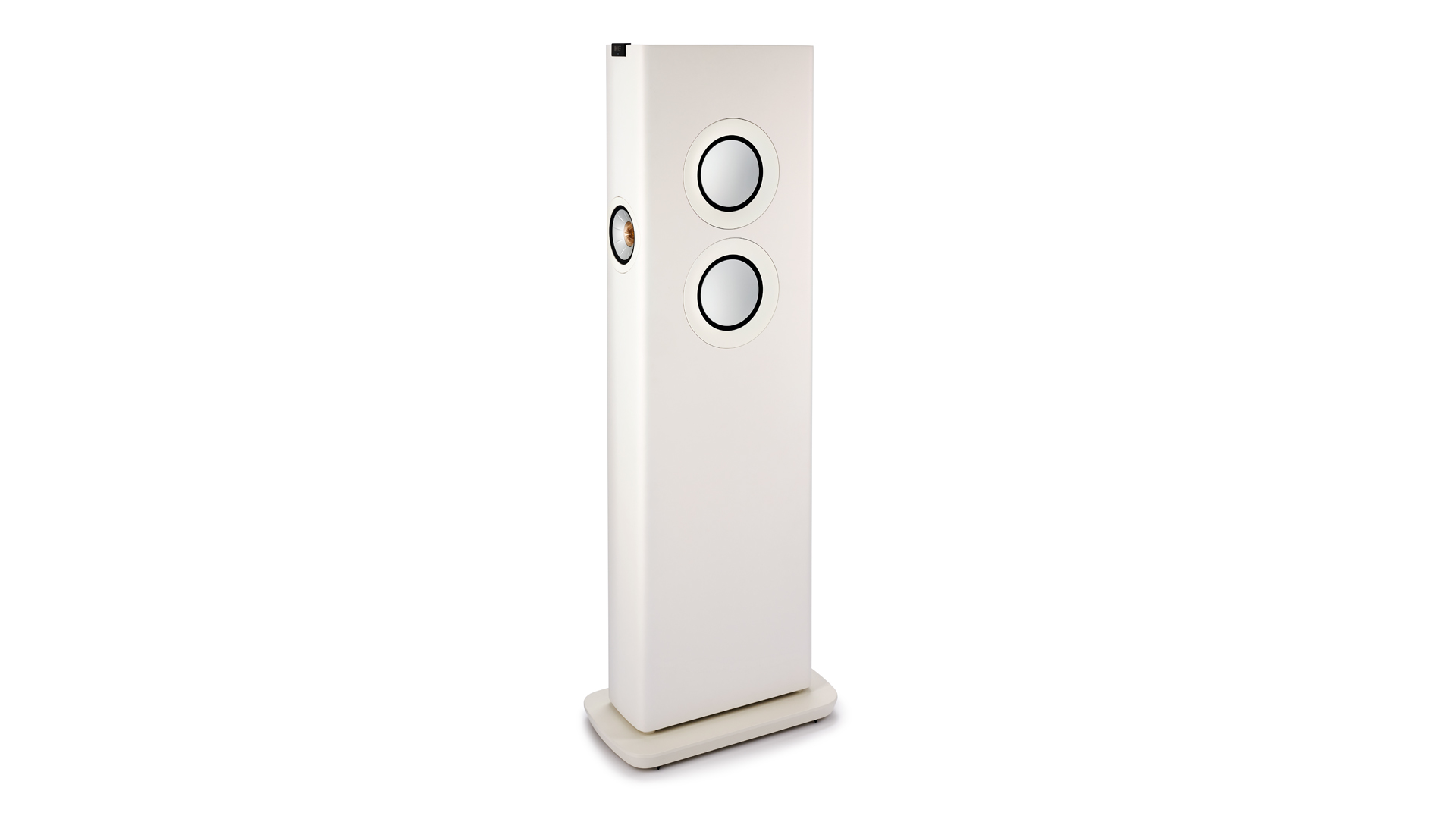
A combination of cleverly positioned cardboard surrounds and plastic clips means you can unbox the KEF LS60 Wireless in just a few minutes. It’s at this point you’ll be transfixed by what is one of the most impressive-looking pair of speakers we’ve seen this year.
There’s so much going on with the KEF LS60 Wireless from a design standpoint that it’s difficult to know where to start. But we’ll try. The first thing that strikes you is the cabinets are extraordinarily slim. Excluding the plinths, each tower measures just 13cm across. When you consider the LS50 Wireless II standmounters are 20cm wide, that’s a considerable amount of shrinkage.
- Read our KEF interview on the making of the LS60 Wireless
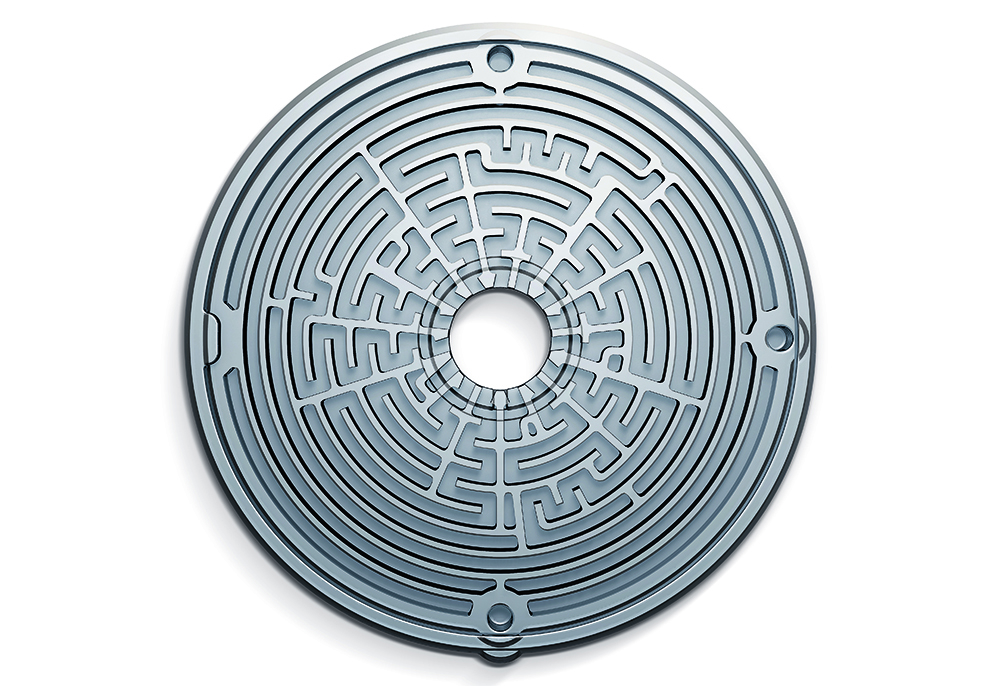
A slim cabinet calls for a slimmer-than-usual Uni-Q driver and KEF’s engineers have delivered a brand-new version (the 12th generation, would you believe?) of its trademark drive unit. It’s been designed specifically for the LS60 Wireless to cope with that change in width.
It is in fact the smallest Uni-Q driver the company has ever designed and combines a 10cm aluminium cone for the midrange with a 19mm vented aluminium dome tweeter. For this latest iteration of Uni-Q, KEF has added a tweeter gap damper and a new Z-Flex surround to aid dispersion and reduce distortion.
The tweeter also uses KEF’s Metamaterial Absorption Technology (MAT), a clever piece of engineering that we crowned 2020's Innovation of the Year at that year's What Hi-Fi? Awards.
We first saw this MAT technology used on the KEF LS50 Meta passive speakers before it was introduced on the LS50 Wireless II. MAT helps to absorb soundwaves that radiate from the back of the tweeter dome so that they don’t interfere with the unit’s forward output. The application here takes the form of a round piece of plastic with a maze-like structure placed behind the tweeter. Each ‘path’ in the structure is a certain size and length and ‘tuned’ to absorb a specific range of frequencies. KEF claims that the paths help create an ‘acoustic black hole’, absorbing 99 per cent of the unwanted sound.
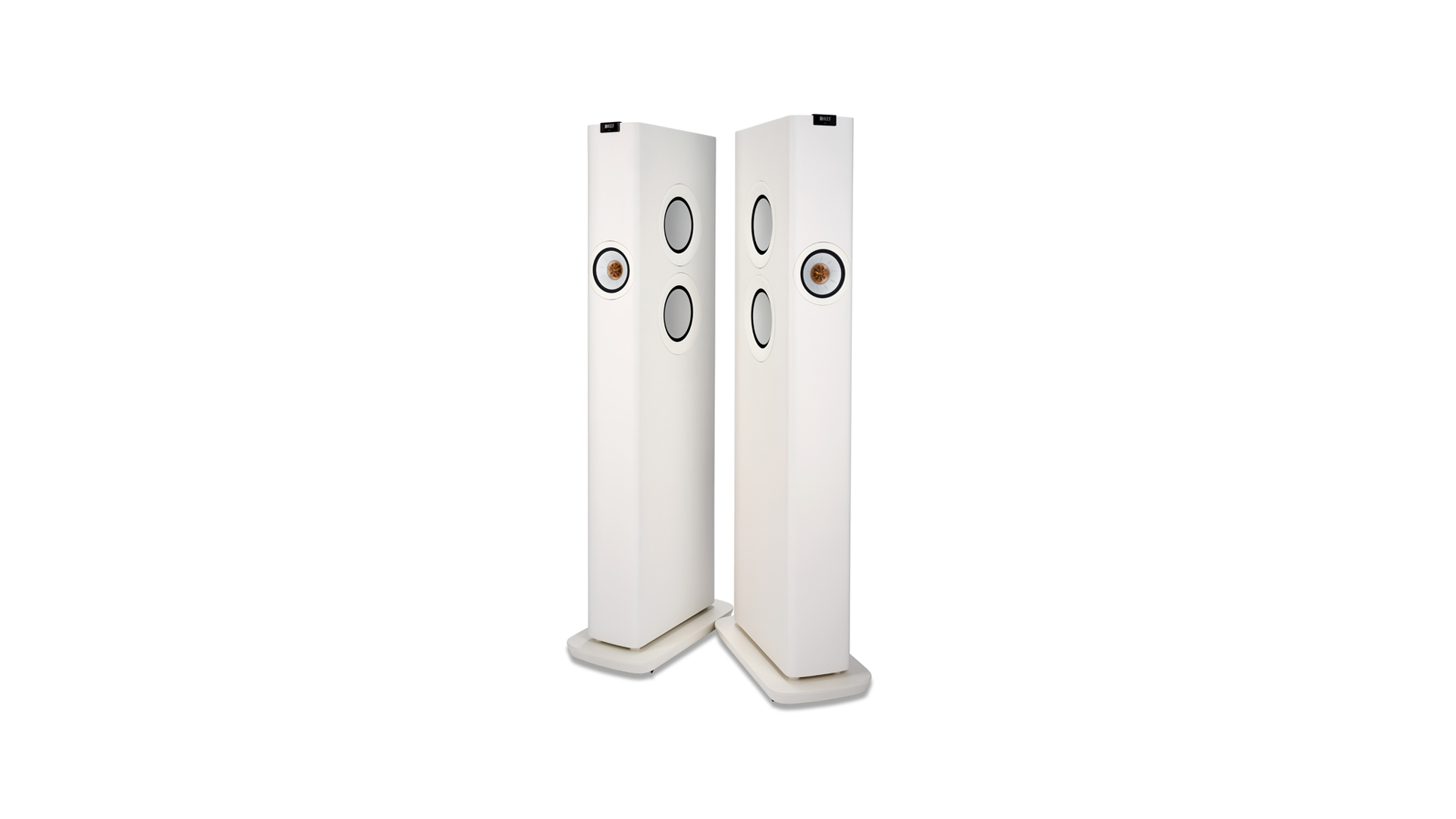
Driver Uni-Q driver array (19mm aluminium tweeter; 10cm aluminium midrange), 4 x 13.5cm Uni-Core drivers
Max power 700W per channel
Streaming AirPlay 2, Google Chromecast, UPnP, Bluetooth, Roon Ready
Streaming services Spotify Connect, Tidal Connect, Amazon Music, Qobuz, Deezer
Max resolution support 24-bit/384kHz PCM, DSD256, MQA
Inputs HDMI eARC, optical, coaxial, RCA stereo, Ethernet
Output Subwoofer x2
Dimensions (hwd) 109 x 21.2 x 39.4cm (with plinth)
Weight 62.4kg
Finishes x4 (carbon black, titanium grey, mineral white, royal blue)
That’s the mids and high frequencies taken care of in this three-way loudspeaker system, but how has KEF managed to ensure enough bass is created from such a slim cabinet?
The company has called on its clever Uni-Core driver arrays which made their debut on the company’s tiny KC62 subwoofer back in January 2021. They’re designed to deliver maximum bass from small enclosures, combining force cancellation (the drivers are mounted back to back), a shared motor and two completely different, concentrically arranged voice coils (one for each driver).
And yes, this is yet another KEF technology that has won our most recent Innovation of the Year Award at the 2022 What Hi-Fi? Awards.
Each Uni-Core driver also uses KEF’s ‘P-Flex’ surround suspensions which helps resist pressure build-up inside the cabinet. Unlike their standmounter siblings, the LS60 Wireless are a sealed-box design.
Two pairs of 14cm Uni-Core drivers are used in each tower and positioned equidistantly around the Uni-Q driver array. KEF calls this its Single Apparent Source technology. The positioning of the drivers in this way means that lows, mids and highs all appear to radiate from a single point toward the listener. The benefit of this is you can deliver precise imaging and accurate sound over a wide listening area.
If you're thinking the driver set-up looks a little familiar, it’s because KEF’s flagship Blade Meta loudspeakers use something very similar. Given those speakers cost a cool £30,000 ($35,000), it’s a signal of intent that KEF’s decided to trickle this technology down to the LS60 Wireless.
Having so much weight positioned high up the speaker, KEF has had to ensure the floorstanders are as stable as possible with no threat of them tumbling over. To that end, each speaker is fitted with an extremely heavy base plate to keep it anchored to the floor. Thankfully they already come attached so the only decision you need to make is whether to attach the supplied spikes or stick with the rubber feet.
We experienced gains in clarity and bass precision when we switched to the spikes, although we also found the threads on our pair were slightly tight which meant it was a bit of a struggle getting them into place.
When it comes to finishes, the KEF LS60 Wireless comes in three different matte options: Titanium Grey, Mineral White and Royal Blue.
Features
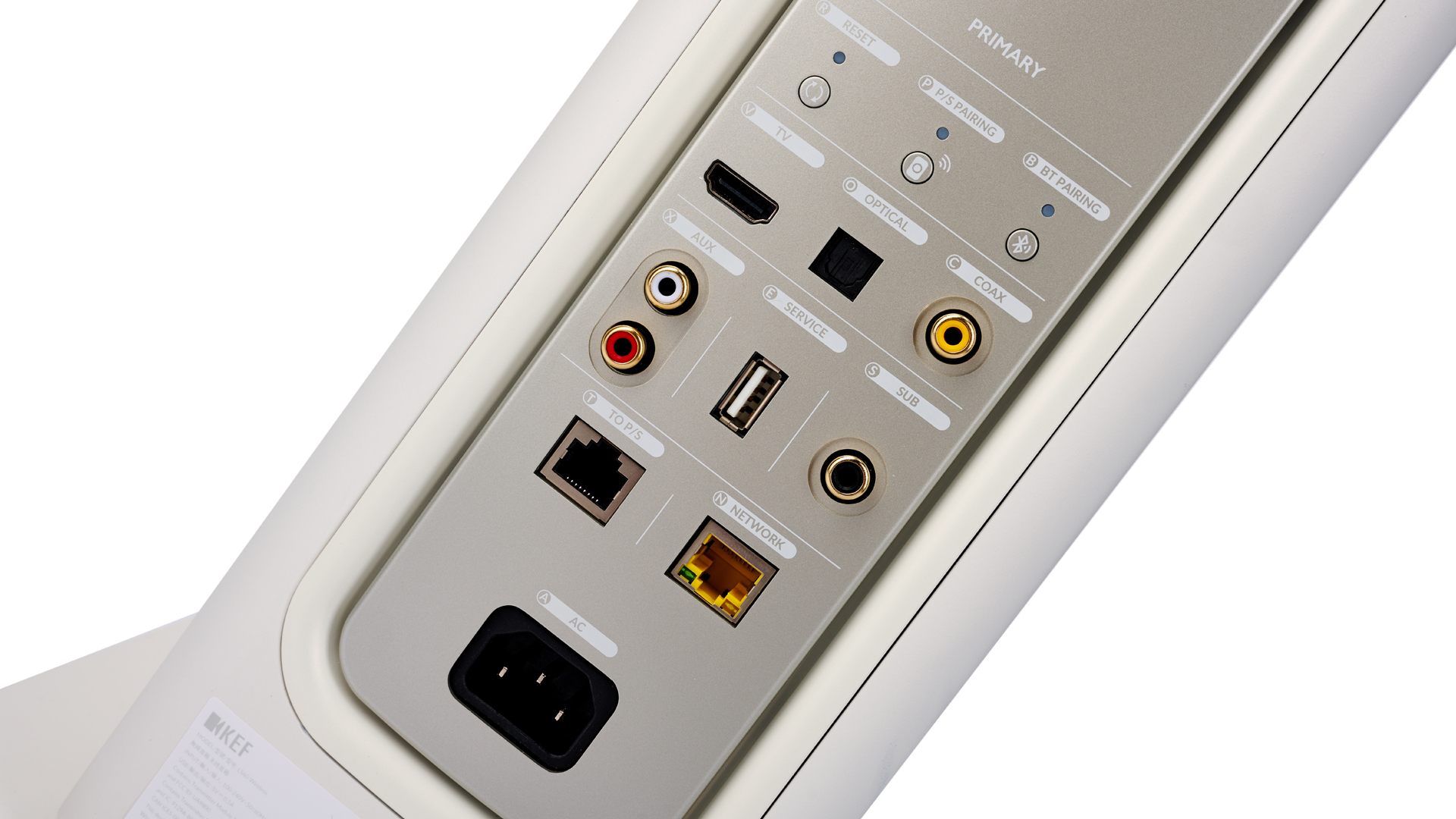
The right speaker is the primary speaker and boasts the lion's share of connections. On the rear you’ll find buttons for pairing left and right speakers together, connecting Bluetooth devices and resetting the entire system should you need to.
You’ve also got an array of digital audio inputs – HDMI eARC, optical and coaxial – plus a pair of analogue RCA inputs. KEF sees users not only feeding their speakers a diet of CD-quality and hi-res music streams but also as part of a modern, multi-functional AV system. During testing we connected an LG G2 OLED TV via HDMI and didn’t experience any latency problems, nor were there any issues with the robustness of the wireless connection between the two towers while they were handling the audio from the TV.
There’s an Ethernet port for connecting the speakers directly to your router or a switch and a second port which lets you run the supplied ethernet cable between both speakers. This allows you to up the native playback of the system to 24-bit/192kHz, though it’s worth remembering that the system is still capable of handling up to 24-bit/96-kHz natively through KEF’s own low-latency wireless connection (it will downsample anything above and up to 24-bit/384kHz).
There’s also support for DSD256 and MQA decoding which will come in handy for anyone who happens to have a suitable collection of music files or who tends to listen to a lot of Tidal Masters.
Should you want to connect an external subwoofer or two, each speaker sports a subwoofer output.
The LS60 Wireless is driven by the same W2 wireless platform that was introduced with the LS50 Wireless II. This means you’ve got access to a plethora of connectivity options including wi-fi, Apple AirPlay 2, Google Chromecast and Bluetooth. You’ve also got Amazon Music, Deezer, Qobuz, Spotify and Tidal streaming services to choose from.
You get a small plastic remote control included in the box. It resembles something you’d get with a streaming stick and offers basic controls for playing, pausing, skipping tracks, switching inputs and altering volume. But you’re only really going to save this for emergencies; your day-to-day interactions will likely come through the KEF Connect app, which places all the playback controls, streaming services and internet radio at your fingertips.
It also gives owners the opportunity to set up the LS60 Wireless for their particular room layout. You can go into the app and choose to either configure a Normal or Expert EQ setting. The former offers basic adjustments that take into account factors such as the speakers’ distance from your wall, the size of your room and how well damped it is. The latter offers more extensive tweaking including treble trim, phase correction, and the ability to alter the amount of bass extension.
By default, the LS60 Wireless is set up for positioning in free space with bass extension set at medium, but the chances are this won’t suit everyone, so we’d make a beeline straight for those EQ settings mentioned above. KEF’s tried to make the whole process as simple or as involved as you want, and we feel it’s got the balance just right.
Besides all the streaming functionality, drive units and DSP, the LS60 Wireless also packs in all the amplification. Each speaker uses three separate amplifiers to drive low (LF), mid (MF) and high frequency (HF) sections independently. The LF section is powered by a 500W Class D amp, while the midrange uses a 100W amp of the same variety. The HF section, meanwhile, is driven by a 100W Class AB amp. They’re located in the lower section of the speaker which is sealed off from the top section to remove any potential interference with the drive units. The system is kept cool by the use of heat sinks and an opening between the base of the speaker and the plinth that allows air to travel up into the main electronics module and out of the speaker near a vent close to the back panel on each speaker.
Sound
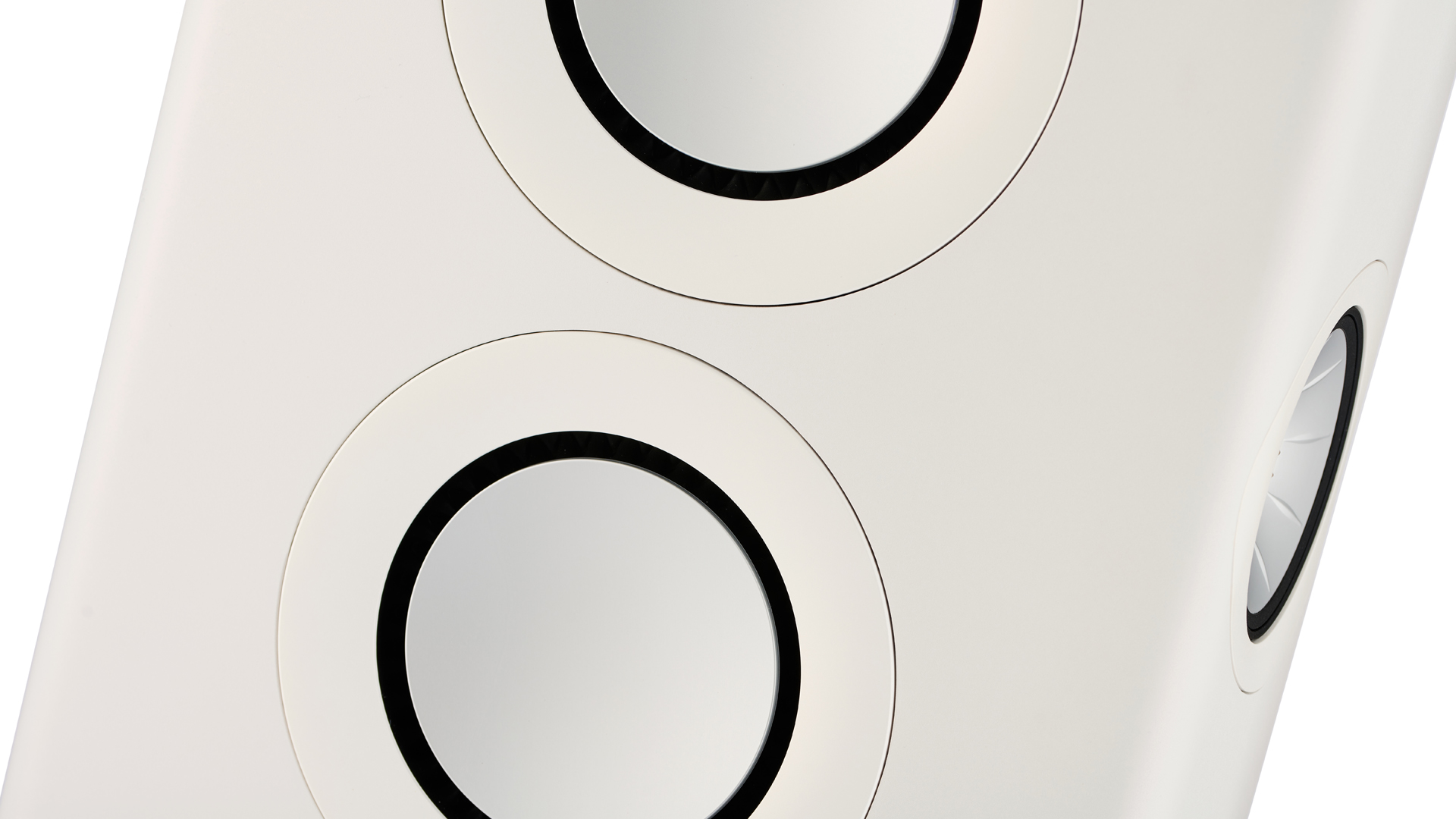
But enough about all the ingredients that go into the KEF LS60 Wireless. How does it actually sound?
Well, it’s fair to say this system serves up arguably the finest audio we’ve heard from such a product so far. And it all starts with the excellent integration of all those drive units. The LS60 Wireless presents an immersive and focused stereo image that rival products could only dream of. There’s width and height, but it never sounds stretched and you never lose the sense of precision and control that the KEFs show over the music.
We kick things off by asking the LS60W to play a Tidal Master of David Bowie's Modern Love, and the LS60 is quick to set out its fantastically well-organised stall. Each element is introduced and layered beautifully in the soundstage. Firstly the guitar, then the drums and piano, and finally the vocal arrives to complete the picture.
The system sounds lively and enthusiastic and we immediately find our feet tapping along in approval. Precision and solidity is a theme that runs through the LS60 Wireless and every individual piano key strike, guitar string pluck and drum beat is dispatched with gusto and self-control. The speakers keep a solid grip on the track but don’t squeeze the life out of it. Quite the opposite in fact. You feel right in the middle of the action with the LS60 Wireless, like you’re trapped in a bubble of sound that you hope won’t burst.
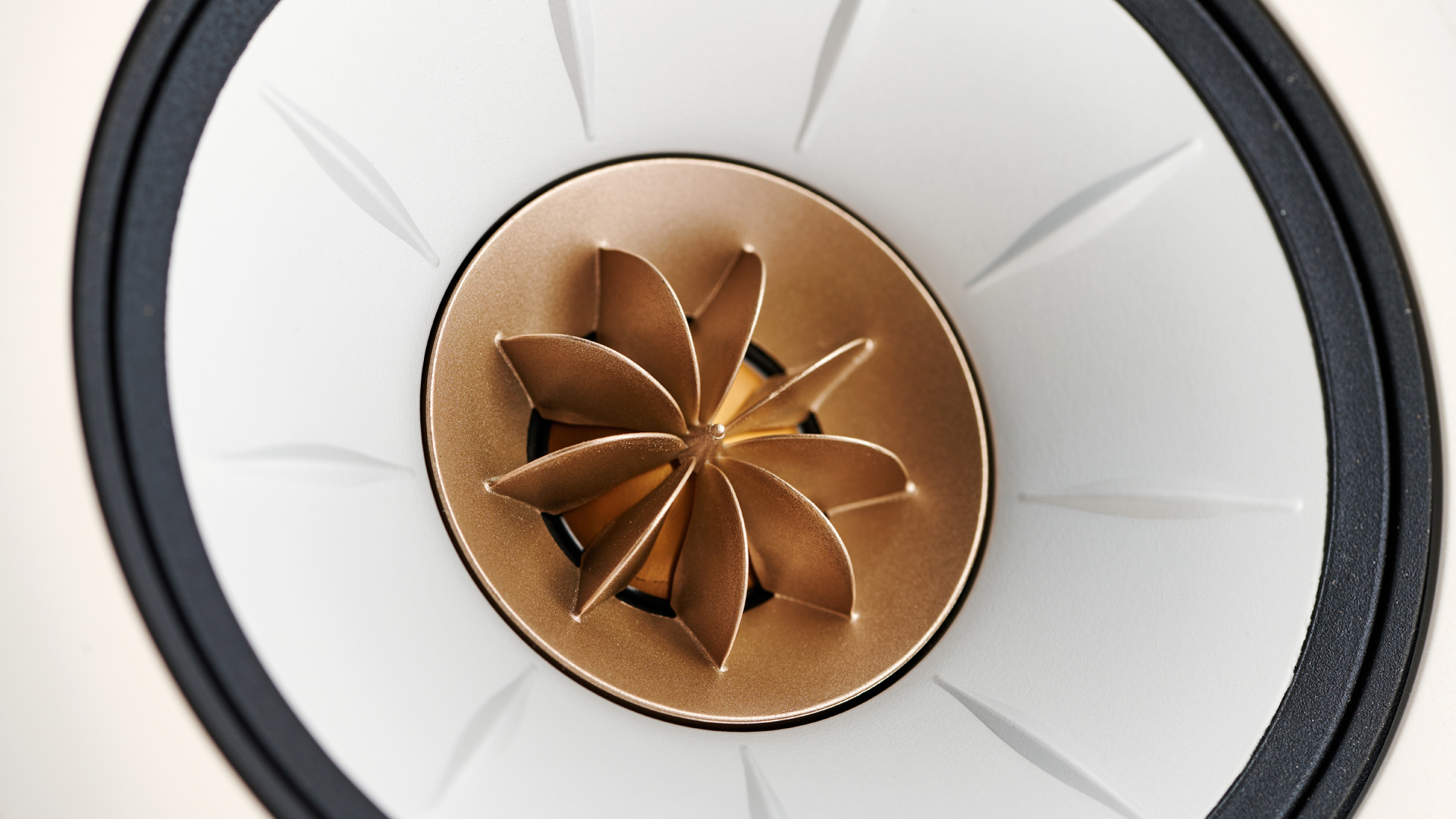
We’re keen to hear just how the KEF LS60’s Uni-Core drivers handle low frequencies so we switch to the Jauz Remix of Shaed’s Trampoline. Before the dubstep element has a chance to muscle in, we’re drawn to the detail in the midrange. There’s an impressive level of detail in and space around the lead vocal. It’s surrounded by an echo that floats effortlessly in the ether.
The vocal then rises and tees up a brief but perfectly executed moment of silence before the KEFs plummet to follow the track's deep, dirty bassline. It’s dispatched with intent and force – edges are sharply drawn and there’s so much texture to the notes the speakers almost fool you into thinking you can reach out and feel them. There’s so much weight and power on display, you wouldn’t believe a cabinet that slim could produce such an impactful sound.
You can definitely hear the character of the LS50 Wireless II in the floorstanders here, but the LS60 takes things up a couple of notches, like a boxer moving up a couple of weight divisions.
Finally, we switch over to Hans Zimmer's Time from the Inception OST, where the KEF system shows off its dynamic prowess and superb sense of scale. It gets the emotions going with the opening exchanges of the track and low-level dynamics draw you in. Delicate strings contrast with the powerful, bold drums and as more elements arrive and raise the track's dynamic ceiling, the KEFs oblige with a huge swell of sound before returning to the track’s delicate beginnings.
Verdict
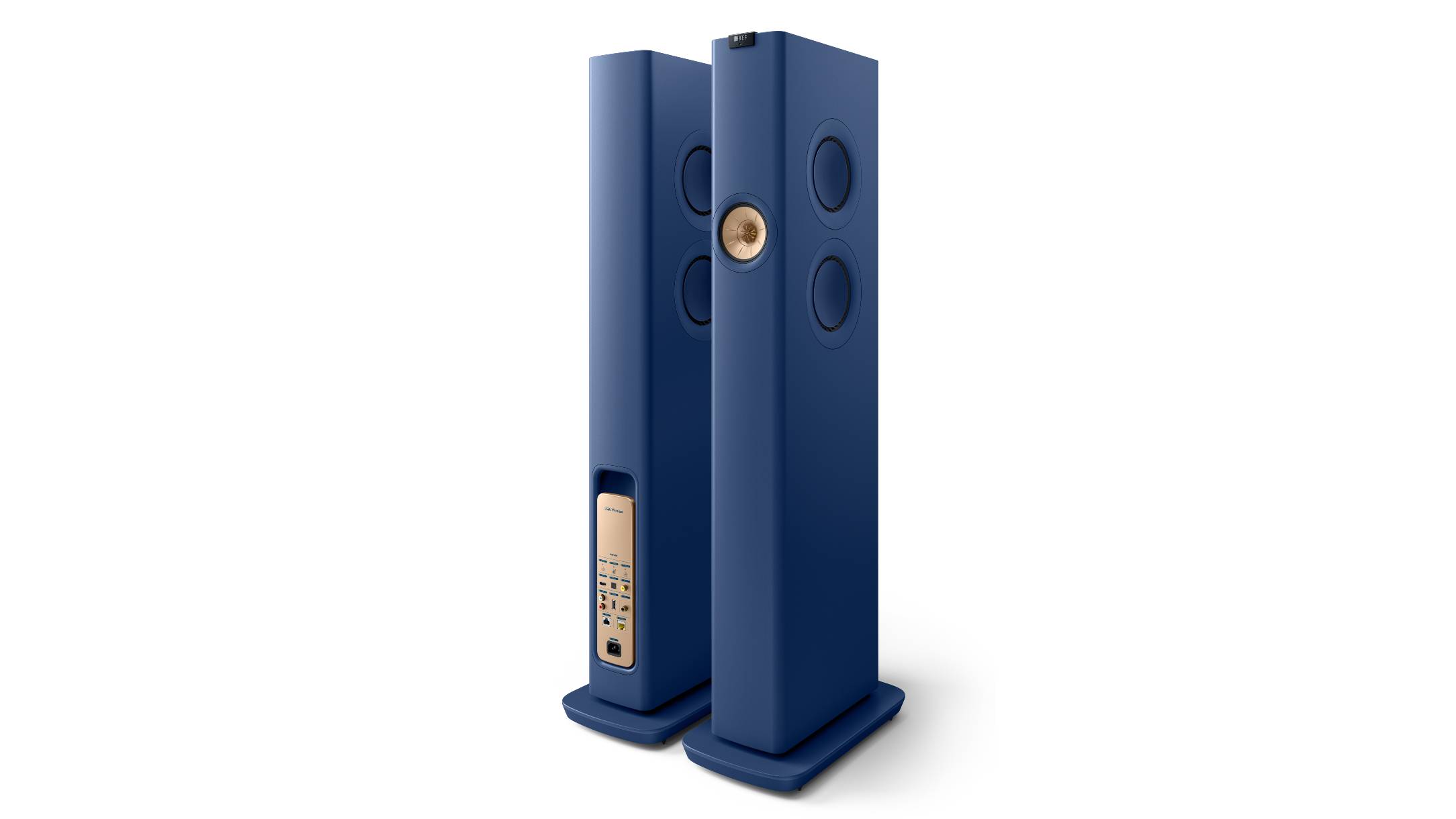
KEF redefined what you should expect from an all-in-one stereo system with the LS50 Wireless and it has managed to raise the bar once again with the stunning LS60 Wireless.
The company has managed to combine impressive engineering and a comprehensive feature set with an attractive user experience and top it all off with fantastic audio quality. It’s a fine example of modern hi-fi and currently has no real rival if you’re in the market for a convenient yet premium solution. The LS60 Wireless system is a fantastic achievement and a fitting way to celebrate KEF’s 60th anniversary.
SCORES
- Sound 5
- Features 5
- Build 5
MORE:
KEF wireless speaker systems compared, from LSX II to LS60 – which one should you buy?
Best KEF speakers: budget, premium, bookshelf and standmount
Best floorstanding speakers: budget to premium
These are the best music systems
Read our review of the KEF LS50 Wireless II
What Hi-Fi?, founded in 1976, is the world's leading independent guide to buying and owning hi-fi and home entertainment products. Our comprehensive tests help you buy the very best for your money, with our advice sections giving you step-by-step information on how to get even more from your music and movies. Everything is tested by our dedicated team of in-house reviewers in our custom-built test rooms in London, Reading and Bath. Our coveted five-star rating and Awards are recognised all over the world as the ultimate seal of approval, so you can buy with absolute confidence.
-
TenTonTarantula Seems like a lot of compromises needed to make this all work in a slim form factor...but then why be so beholden that form factor? When have tiny cabinets ever been anything but inversely correlated to sound quality?Reply -
twinkletoes 6k and still no in-room EQ?Reply
Hopefully, they'll support them longer than the original LS50 wireless what was that 5 years!
6k is a lot for what is effectively a landfill product in the 10 years (at best) Sorry to be cynical but these have planned obsolescence written all over them, the same for any of these all in one box. Naim, Cyrus, linn. And I'm not about that they days. We should be doing better in 2022. 6K i'd expect them to a be a hand me down product.
Hopefully they will produce a "Dumb" pair -
Sfhussain No rivals? What about the Buchardt A700? Pretty similar price and features. Would love to see a head to head comparison!Reply -
Sfhussain ReplyTenTonTarantula said:Seems like a lot of compromises needed to make this all work in a slim form factor...but then why be so beholden that form factor? When have tiny cabinets ever been anything but inversely correlated to sound quality?
It helps for the speakers to disappear in terms of soundstage. A large thick cabinet will inevitably introduce their own interference to the sound, unless they are damped to oblivion like the Q Acoustics flagships. Ofcourse the slim cabinets can't fully eliminate this problem just minimises it, otherwise you'd need speakers floating on thin air. If you hear the more expensive KEF Blades you'll know what I'm talking about. The speakers practically (acoustically) disappear leaving you with just pure sound. But yeah sonically in terms of dynamic range size does matter. -
Jacore I feel like this is more aimed at "lifestyle" than Hi-Fi. As long as KEF keep making products for the true Audiophiles as well (separates) and doesn't turn into another Harman Kardon I'm fine with that. For 6k to have a plasticky remote control though, may be an issue for their customer base who want a "statement peace".Reply -
manicm Amazing how many illiterates here. If any of you read the review, there is basic and advanced equalisation on offer.Reply
As to the design well I think it's fantastic. -
Gray Reply
No need to apologise for being cynical.twinkletoes said:Sorry to be cynical but these have planned obsolescence written all over them
I'm not sure about 'planned' obsolescence but, as far as I'm concerned any possibility of obsolescence would stop me buying them at a quarter of their price. -
bigfish786 I know that looks aren’t everything, but they are not exactly aesthetically pleasing, well to me .Reply
then Again, I think harbeth look like ferret boxes, so what do I know 🤣🤣 -
WayneKerr Reply
Have you ever heard a Harbeth speaker bigfish? :)bigfish786 said:then Again, I think harbeth look like ferret boxes, so what do I know 🤣🤣

